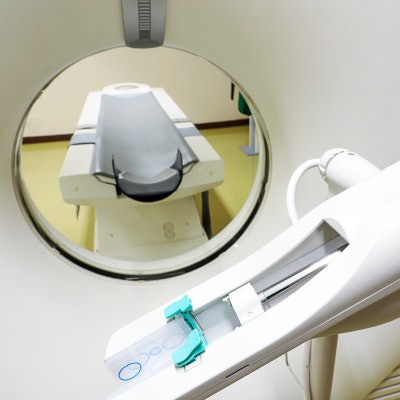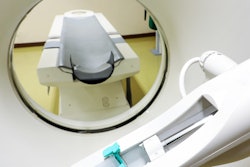
In the midst of the CT contrast shortage crisis, radiologists continue to offer their peers tips on how to cope, from diversifying suppliers to dividing contrast doses, say researchers from Texas in a report published May 25 in Radiology: Cardiothoracic Imaging.
The supply chain disruptions highlight how important it is to avoid relying on a single vendor for materials, wrote a team led by Dr. Lakshmi Ananthakrishnan of the University of Texas Southwestern Medical Center in Dallas.
"While the single supplier model is efficient and cost-effective, its application to critically necessary services such as health care must be questioned considering disruptions related to the COVID-19 pandemic," the group noted.
The COVID-19 pandemic has laid bare supply chain weaknesses in a variety of industries. In addition to the shortage in iodinated contrast material (particularly iohexol, the key ingredient in Omnipaque from GE Healthcare), the U.S. is also experiencing a shortage of baby formula (primarily Abbott Laboratories' Similac), the authors noted.
"The rather sudden diminished availability of iodinated contrast has forced health care systems to engage in more judicious use of product through catalyzing the adoption of behaviors that had been recommended and deemed reasonable prior to the shortage," they wrote.
The radiology department at Texas Southwestern Medical Center serves four facilities, and the largest two of these use iohexol as their primary iodinated CT contrast agent. At the time of the report's publication, one of the facilities, Parkland Health -- a safety net hospital that serves Dallas County -- had fewer than four weeks of contrast available; the hospital provides more than 2,000 CT exams per week, 60% of which use contrast, the team noted.
In their report, Ananthakrishnan and colleagues describe how their department has been handling the contrast supply shortage.
- Establishing a task force. Radiology faculty and hospital administration formed a task force to assess the scope and duration of the contrast shortage, alternative contrast options, and possible strategies for dealing with the situation. The task force included members of the department's CT operations committee, division radiologist representatives, and department leadership.
- Making best use of existing supply. The task force took inventory of the number of single- and multi-use contrast vials and offered guidance on how to both safely split multi-use vials and use less contrast for some procedures (i.e., using 50 cc of contrast for head CT angiography rather than 60 cc). It also suggested dividing single-use vials into 25 cc portions.
- Working with referring providers. The task force developed an intervention that included asking referring physicians to postpone outpatient CT for two months, to order noncontrast CT when possible, and to restrict requests for contrast CT exams for non-life-threatening conditions.
It doesn't help that the contrast shortage is hitting just as imaging volume increases as hospitals try to catch up on exams delayed by the COVID-19 pandemic -- a phenomenon further exacerbated by a shortage of radiologic technologists, Ananthakrishnan's team noted.
"In our system, the ability to divert certain contrast enhanced CT exams to alternative modalities has been limited by capacity-throughput limitations due to the technologist shortage, and the inability to absorb more cases based on existing backlogs and access issues," the group wrote.
The crisis is also having an effect on radiologists, who must accept that images "will look different and contain less information compared with routine practice," the authors cautioned. Yet the situation also offers radiologists a chance to demonstrate how they support patient care and appropriate use of imaging.
"This shortage is also a unique opportunity for radiologists to take ownership of their role as consultants and showcase their role as essential members of the clinical care and hospital leadership teams," the team wrote.
In the end, radiology will need to transition from a single vendor supply model to something more diverse -- and keep efficient use of healthcare supplies always in mind.
"The cost savings achieved with group purchasing from a limited number of suppliers takes advantage of economies of scale," the group concluded. "[But] further savings can be achieved with just-in-time inventory management by limiting on-site storage expenses."





















